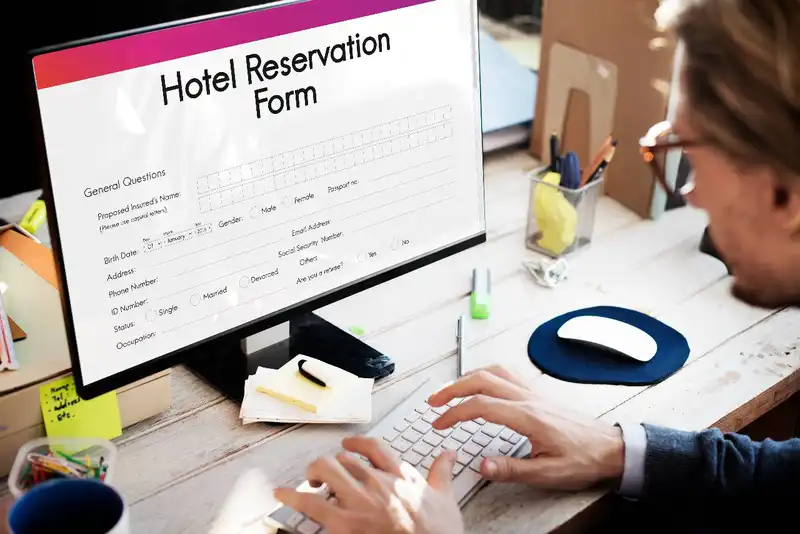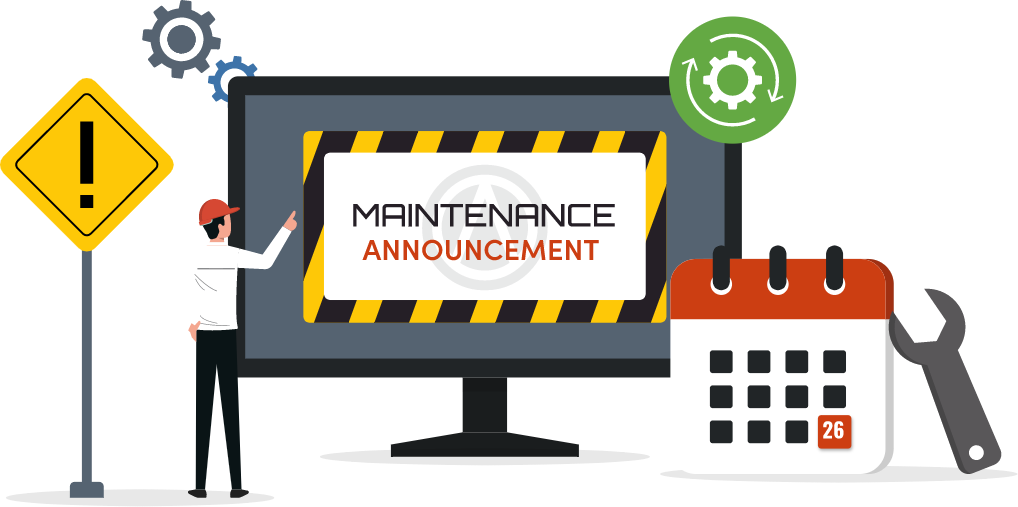What is overhead cost?
Overhead cost is the ongoing expense required to operate a business that isn't directly tied to producing a product or service. In hotels, it includes utilities, administrative salaries, maintenance, insurance, and other indirect operational expenses.
Overhead Cost Formula Explained for Hotel Owners
Overview
Running a hotel is more than providing comfortable rooms and excellent service - it's managing a complex mix of costs, staff, and operations behind the scenes. One of the most important, yet often misunderstood, aspects of hotel management is overhead costs. These are the ongoing expenses that aren't directly tied to serving a guest but are essential to keeping your hotel running smoothly.
Understanding your overhead costs isn't just an accounting exercise - it's a critical tool for making informed decisions about pricing, budgeting, and operational efficiency. When you know exactly what your hotel spends to stay operational, you can price rooms and services strategically, plan for seasonal fluctuations, and avoid surprises that eat into your profit margins.
What Counts as Hotel Overhead Costs

Before you can calculate overhead, it's essential to understand exactly what falls under this category. Overhead costs are the ongoing expenses required to keep your hotel operational, but unlike direct costs - such as guest amenities or room-specific cleaning supplies - they aren't tied to a single room or guest. These costs support the overall functioning of the property and need to be carefully tracked to ensure accurate financial planning.
Common examples of hotel overhead include -
1. Utilities - Electricity, water, gas, and waste management. These are recurring expenses that keep your property functional. In hotels, utility costs can fluctuate significantly based on occupancy levels, seasonality, and building efficiency, making careful monitoring critical.
2. Staffing for non-revenue roles - Administrative personnel, accounting, HR, and management salaries fall into overhead because they support operations rather than directly generate revenue. Even roles like maintenance staff or janitorial teams, which indirectly impact guest experience, are considered overhead.
3. Property-related expenses - Insurance, property taxes, and licensing fees are fixed costs that exist regardless of how many rooms are occupied.
4. Maintenance and repairs - General upkeep of the building, plumbing, HVAC systems, and landscaping fall under overhead since these costs keep the hotel running but aren't tied to individual guest services.
5. Marketing and administration - Website management, advertising campaigns, office supplies, and booking system fees are also overhead, as they enable operations but don't directly relate to servicing a specific room.
Accurately categorizing these expenses is critical. Misclassifying costs as direct or overhead can distort your per-room calculations and lead to pricing decisions that either undercut profitability or overprice your services. For instance, treating utilities as a direct cost rather than overhead could exaggerate the cost per room, resulting in unnecessarily high rates.
By carefully identifying and recording overhead costs, hotel owners gain a clear picture of what it truly costs to operate the property, laying the foundation for precise calculations using the overhead cost formula. This clarity not only improves pricing strategy but also helps in forecasting, budgeting, and operational planning, ensuring your hotel remains financially healthy in both high and low seasons.
Transform Your Restaurant Operations Now!
Effortless Inventory Tracking with Altametrics!
Breaking Down the Overhead Cost Formula
Once you've identified all the costs that fall under hotel overhead, the next step is understanding how to calculate and apply the overhead cost formula. At its core, the formula is straightforward -
Overhead Cost per Unit = Total Indirect Costs / Number of Units
In the context of a hotel, "units" typically refer to rooms, occupied nights, or services offered. The goal is to determine how much of your overhead each unit carries, so you can make informed decisions about pricing and budgeting.
Step 1. Calculate Total Indirect Costs - Start by summing all the overhead costs you identified - utilities, administrative salaries, property taxes, insurance, maintenance, and marketing. For example, if your hotel spends $50,000 per month on these expenses, that is your total indirect cost. Accuracy here is critical - missing or underestimating even a single category can skew your calculations and affect your profit margins.
Step 2. Determine the Number of Units - Next, decide how you want to allocate the overhead. Most hotels divide total overhead by the number of rooms multiplied by the number of nights in a period. For example, a 50-room hotel over a 30-day month has 1,500 room-nights. This allows you to spread the total overhead cost evenly across all available rooms.
Step 3. Apply the Formula - Divide the total overhead cost by the number of units. Using the numbers above - $50,000 / 1,500 room-nights = approximately $33 per room per night. This figure represents the portion of overhead that each room must cover to break even.
The beauty of this formula lies in its simplicity and flexibility. It provides a clear metric to understand how overhead impacts every room or service, allowing hotel owners to adjust pricing, plan budgets, or identify areas where efficiency improvements could reduce costs. By consistently applying this formula, you transform overhead from an abstract accounting concept into a data-driven tool for operational and financial decision-making.
Fixed vs. Variable Overhead Costs
Not all overhead costs behave the same way, and understanding the difference between fixed and variable overhead is crucial for effective hotel management. This distinction allows hotel owners to make smarter pricing, budgeting, and operational decisions by identifying which costs remain constant and which fluctuate with hotel activity.
Fixed overhead costs are expenses that remain stable regardless of occupancy or guest activity. These costs are predictable and typically include property taxes, insurance, administrative salaries, and some maintenance fees. For example, your property tax bill doesn't change whether you have 10 rooms or 100 rooms booked in a month. Fixed costs are essential to account for because they represent a baseline expense that your hotel must cover in every financial period, regardless of performance.
Variable overhead costs, on the other hand, change based on hotel operations. Utilities, laundry services, consumables, and some maintenance tasks often rise and fall with occupancy. For instance, during peak season, higher guest occupancy increases water and electricity usage, which in turn increases overhead. Similarly, seasonal staffing adjustments for housekeeping or maintenance may be required to accommodate higher guest volume.
Separating fixed and variable overhead helps hotel owners better forecast cash flow and adjust pricing strategies. For example, understanding your variable overhead per occupied room allows you to calculate the minimum rate required to cover additional costs when occupancy increases. Fixed overhead, meanwhile, informs your break-even analysis and long-term financial planning.
By clearly identifying which costs are fixed and which are variable, hotel owners gain more control over operational efficiency. This insight enables data-driven decisions - such as adjusting staff schedules, negotiating utility contracts, or managing maintenance timing - without compromising guest experience or financial stability. In essence, this separation turns overhead from a vague expense category into a strategic tool for profitability and planning.
Why Understanding Overhead is Critical

For hotel owners, understanding overhead costs is not just about tracking expenses - it's about gaining a clear picture of your hotel's financial health. Overhead directly impacts profitability, pricing, and operational decision-making. Without a solid grasp of these costs, even a hotel with high occupancy can struggle to achieve sustainable profits.
Knowing your overhead helps in pricing rooms and services accurately. If you underestimate overhead, you risk setting room rates too low, which may attract guests but erode your profit margins. Conversely, overestimating overhead can lead to unnecessarily high rates that reduce competitiveness and occupancy. By allocating costs correctly, you can ensure each room contributes appropriately to covering both direct and indirect expenses.
Understanding overhead also supports budgeting and forecasting. Hotels experience fluctuations due to seasonality, events, or market changes. When you know which costs are fixed and which vary with occupancy, you can predict how overhead will shift and plan accordingly. For instance, during off-peak periods, understanding variable overhead allows you to optimize staffing, utilities, and maintenance without compromising service quality.
Additionally, clear overhead visibility improves operational efficiency. By tracking which expenses make up the largest portions of your overhead, you can identify opportunities for cost control - like reducing energy consumption, renegotiating supplier contracts, or adjusting administrative processes.
Ultimately, understanding overhead turns what can feel like abstract numbers into actionable insights. It gives hotel owners confidence in their pricing, clarity in budgeting, and control over operational costs. When you consistently calculate and monitor overhead, you transform it from a hidden burden into a strategic lever that helps your hotel remain financially healthy, competitive, and prepared for both peak and slow periods.
Applying the Formula to Room Pricing
Once you understand and calculate your hotel's overhead costs, the next step is applying that data to room pricing. Overhead plays a direct role in determining the minimum rate needed to cover costs while still generating profit. Without factoring in overhead, pricing decisions risk leaving your hotel underperforming financially, even when occupancy is high.
Using the overhead cost formula, you can determine the portion of total overhead that each room or room-night carries. For example, if your hotel's total monthly overhead is $60,000 and you have 50 rooms with 30 days in the month (1,500 room-nights), the overhead per room-night is $40. This means that every room you sell must contribute at least $40 toward covering your overhead before accounting for direct costs like housekeeping supplies or amenities.
Integrating overhead into pricing also helps you differentiate rates by room type or service level. Suites or rooms with additional amenities may carry a higher overhead per night due to increased cleaning, utilities, or maintenance requirements. Allocating overhead accurately ensures that each room type is priced in a way that maintains profitability across your property.
Beyond individual room pricing, this approach supports dynamic decision-making. For example, during high-demand periods, understanding your overhead per room allows you to set rates that capture additional revenue without undercutting costs. During slower periods, it helps identify the minimum price to cover fixed and variable overhead while still remaining competitive.
By applying the overhead cost formula to room pricing, hotel owners gain a clear, data-driven foundation for strategic decisions, ensuring each booking contributes to operational sustainability and profitability. This transforms overhead from an abstract accounting figure into a practical tool that directly informs one of the most critical aspects of hotel management- setting rates that work for both your guests and your bottom line.
Using Overhead Data for Operational Decisions
Understanding your hotel's overhead costs is more than an accounting task - it's a strategic tool for operational decision-making. By analyzing overhead data, hotel owners can identify inefficiencies, make informed choices, and ensure that resources are allocated effectively. Here's how -
1. Staffing Optimization - Knowing which overhead costs relate to personnel allows hotel owners to adjust staffing based on occupancy levels and peak periods. For example, housekeeping and maintenance schedules can be aligned with room bookings, ensuring staff hours are utilized efficiently without compromising guest experience.
2. Energy and Utility Management - Overhead analysis highlights variable costs such as electricity, water, and heating. By monitoring these expenses, hotels can implement energy-saving strategies like smart thermostats, LED lighting, and water-efficient fixtures. This reduces overhead without affecting service quality.
3. Budgeting and Forecasting - Tracking overhead trends over time provides insight for better budgeting and forecasting. Metrics such as overhead per occupied room or overhead as a percentage of revenue help owners plan for seasonal fluctuations, maintenance cycles, and administrative needs more accurately.
4. Prioritizing Investments - Overhead data can reveal areas where costs are disproportionately high. Investments in automation, software, or preventative maintenance can reduce long-term overhead and improve operational efficiency, freeing up resources for other strategic initiatives.
By consistently analyzing and acting on overhead data, hotel owners gain greater control over costs, improve operational efficiency, and maintain high-quality service. Numbering and categorizing these actions makes the process practical and easier to implement, turning overhead from an abstract expense into a tangible tool for sustainable management.
Next Steps
Overhead costs are an essential component of hotel management, yet they are often overlooked or misunderstood. By identifying, categorizing, and calculating these costs using the overhead cost formula, hotel owners gain a clear understanding of the true expenses required to operate their property. This knowledge is critical not only for setting competitive room rates but also for making informed operational and financial decisions.
Next steps for hotel owners include -
1. Categorize Your Overhead Costs - Start by listing all indirect expenses, separating fixed and variable costs. Ensure nothing is overlooked, from utilities and maintenance to administrative salaries and insurance. Accurate categorization sets the foundation for precise calculations.
2. Apply the Overhead Cost Formula - Use the formula - Total Indirect Costs / Number of Units - to determine overhead per room or service. This provides a clear, quantifiable metric that can be incorporated into pricing, budgeting, and performance tracking.
3. Integrate Insights into Pricing - Use overhead data to establish minimum rates for rooms and services that cover costs while maintaining profitability. Allocating overhead per unit ensures each booking contributes appropriately to overall financial stability.
4. Leverage Overhead for Operational Decisions - Regularly review overhead data to optimize staffing, manage utilities, and prioritize investments. This transforms overhead from a static accounting number into a dynamic tool for operational efficiency and long-term planning.
5. Monitor and Adjust Regularly - Overhead is not static; it changes with occupancy, seasonality, and business growth. Track trends over time, adjust calculations as costs evolve, and use the data to continually refine pricing and operational strategies.
By following these steps, hotel owners can turn overhead from a hidden expense into a strategic asset. Consistently calculating and analyzing overhead empowers you to make informed, data-driven decisions, control costs, and maintain profitability - all while delivering high-quality service to your guests.
Streamline Your Inventory. Order Smartly.
Start Simplifying Your Orders with Altametrics
Must-Read Content

Step-by-Step Guide to Creating Effective Recipe Cards for Your Restaurant

Creating Recipe Cards Templates That Work for Your Restaurant












